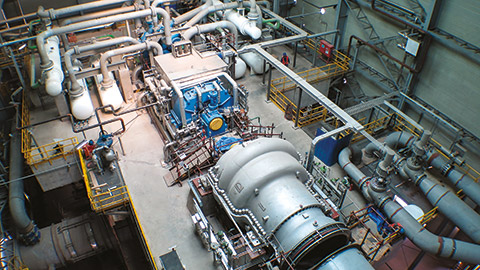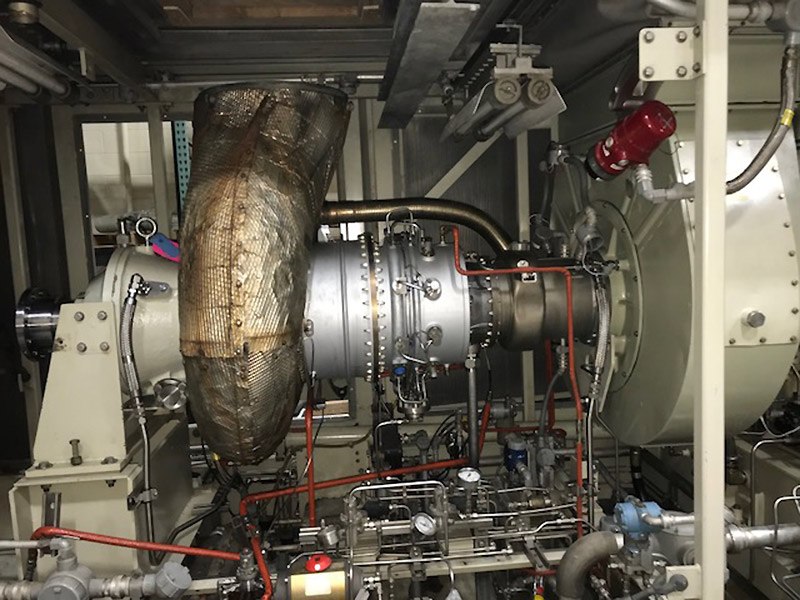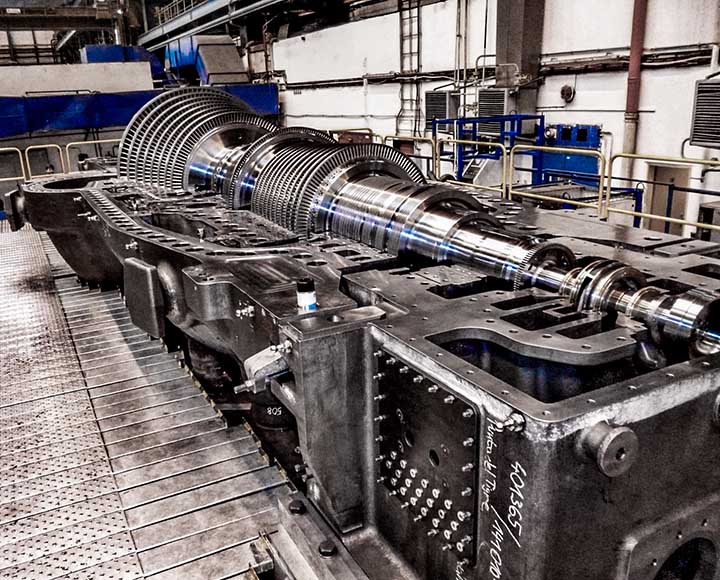KEY FACTORS IMPACTING THE RELIABILITY CENTERED MAINTENANCE (RCM) IN TURBOMACHINERY
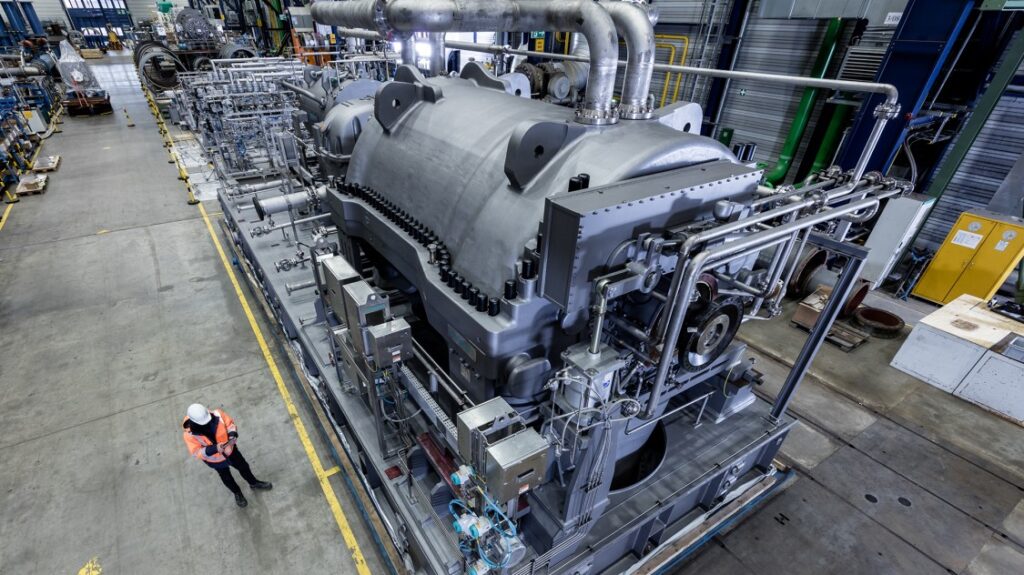
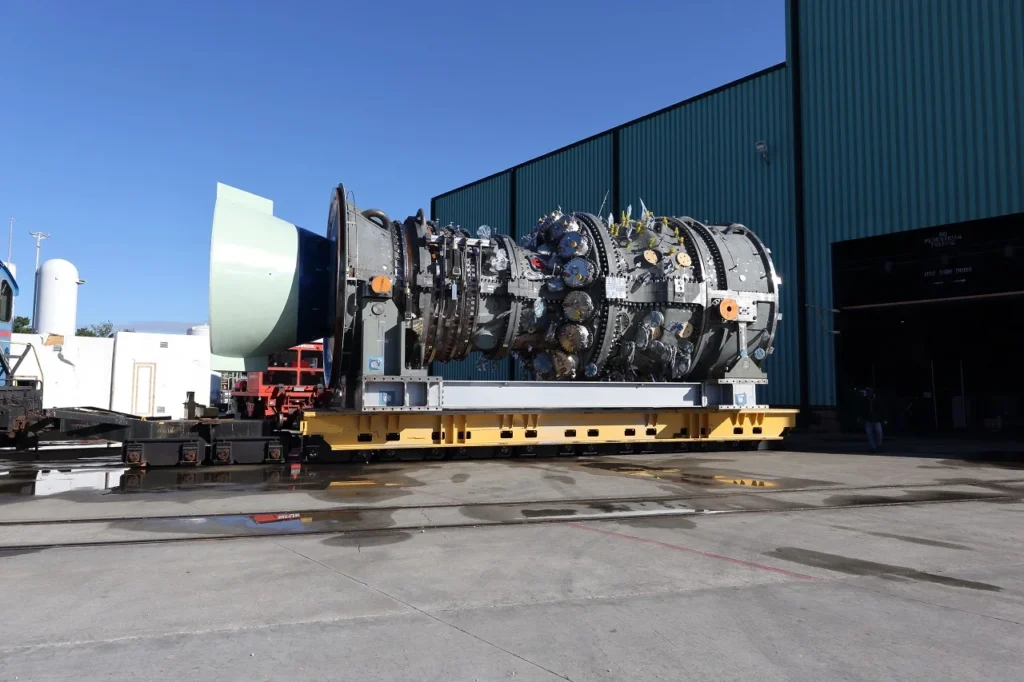
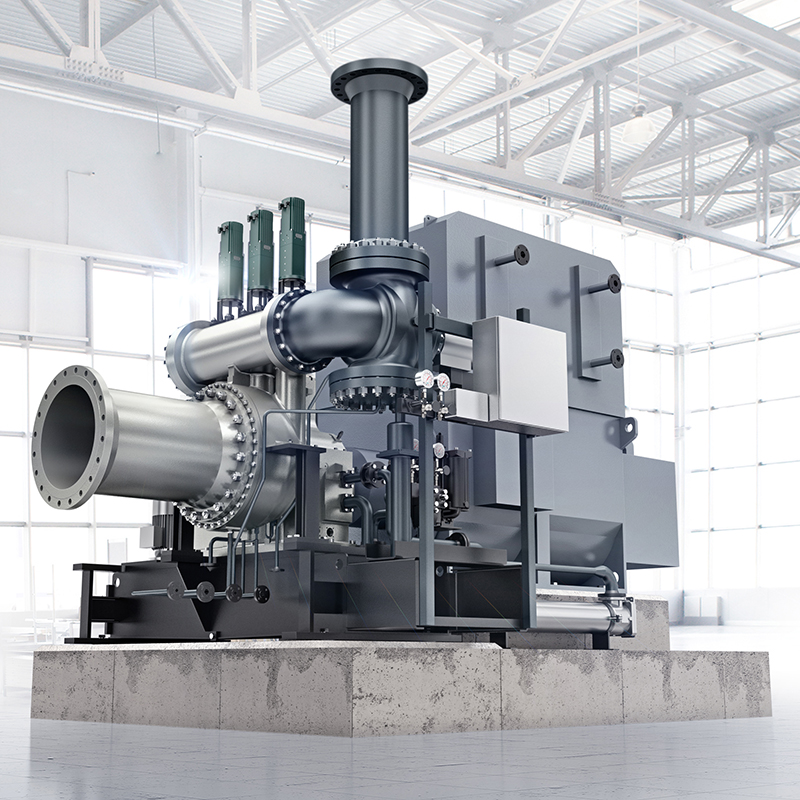
CENTRIFUGAL COMPRESSORS
GAS TURBINES
SPECIAL STEAM TURBINES
Implementing a reliability-centered maintenance (RCM) approach in turbomachinery, such as centrifugal compressors, gas turbines, and special steam turbines, can significantly improve installation, operational, and maintenance efficiencies and enhance their performance. Here are key factors impacting reliability that should be implemented in an RCM program:
Equipment Knowledge and Understanding:
- Develop a comprehensive understanding of the design, operation, and maintenance requirements of the turbomachinery.
- Document and maintain equipment-specific information, including manufacturer guidelines, technical specifications, and operating manuals.
- Conduct regular training programs for maintenance personnel to ensure they possess the necessary knowledge and skills to handle the equipment effectively.
Failure Mode and Effects Analysis (FMEA):
- Perform a detailed analysis of failure modes and their effects on turbomachinery performance, safety, and reliability.
- Identify and prioritize critical failure modes based on their impact on operations, maintenance, and safety.
- Assess the consequences of failure, including production loss, equipment damage, safety hazards, and environmental risks.
Maintenance Strategies:
- Select appropriate maintenance strategies based on the criticality of failure modes, equipment condition, and operational requirements.
- Implement a combination of preventive, predictive, condition-based, and reliability-centered maintenance techniques.
- Determine optimal maintenance intervals and frequencies, considering factors such as equipment operating conditions, manufacturer recommendations, and historical data.
Condition Monitoring and Predictive Maintenance:
- Implement a comprehensive condition monitoring program using techniques such as vibration analysis, thermal imaging, oil analysis, and performance monitoring.
- Regularly monitor key operating parameters and equipment health indicators to detect early signs of deterioration, abnormal behavior, or impending failures.
- Utilize predictive maintenance techniques to schedule maintenance activities based on the actual condition and performance of the turbomachinery.
Spare Parts and Inventory Management:
- Develop a robust spare parts management plan to ensure the availability of critical components for maintenance and repairs.
- Maintain an inventory of essential spare parts, considering lead times, criticality, and equipment downtime risks.
- Establish relationships with reliable suppliers and manufacturers to expedite spare parts procurement and minimize downtime during repairs.
Reliability Data and Analysis:
- Collect and analyze reliability data, including equipment failure records, maintenance logs, and performance metrics.
- Perform statistical analysis to identify patterns, trends, and common failure modes.
- Utilize reliability software and tools to model and predict equipment reliability, estimate remaining useful life, and optimize maintenance strategies.
Root Cause Analysis (RCA):
- Conduct thorough root cause analysis for critical failures to identify underlying causes and develop appropriate corrective actions.
- Apply problem-solving methodologies, such as the 5 Whys or fishbone diagrams, to determine the primary reasons for failures.
- Implement corrective and preventive measures to address root causes and minimize the likelihood of recurrence.
Documentation and Knowledge Management:
- Maintain accurate and up-to-date documentation of maintenance activities, including work orders, inspection reports, and equipment history.
- Create a centralized knowledge repository for equipment-specific information, troubleshooting guides, and lessons learned from past incidents.
- Foster knowledge sharing and collaboration among maintenance personnel to leverage collective expertise and improve decision-making.
Continuous Improvement and Optimization:
- Regularly review and assess the effectiveness of the RCM program, incorporating feedback from maintenance personnel and stakeholders.
- Continuously seek opportunities for improvement, such as optimizing maintenance intervals, refining predictive maintenance techniques, and adopting new technologies.
- Stay updated with industry best practices, advancements in turbomachinery technology, and relevant regulations and standards.
By implementing these key factors in an RCM program, organizations can improve the installation, operational, and maintenance efficiencies of turbomachinery, enhance their performance, and mitigate critical risks and failures in the oil and gas industries.
LIMITATIONS IMPACTING TO IMPLEMENT A RCM IN TURBOMACHINERY
Implementing a reliability-centered maintenance (RCM) program in turbomachinery like centrifugal compressors, gas turbines, and special steam turbines can face certain limitations that may impact its effectiveness. These limitations include:
Lack of Data: Limited availability or poor quality of historical data on equipment failures, maintenance activities, and performance metrics can hinder the analysis and decision-making process in RCM. Insufficient data may lead to inaccurate identification of critical failure modes and suboptimal maintenance strategies.
Complex and Dynamic Systems: Turbomachinery systems are highly complex, with interconnected components and dynamic operating conditions. Analyzing and understanding the interactions between various subsystems and components can be challenging, making it difficult to accurately predict failure modes and develop effective maintenance strategies.
Cost and Resources: Implementing RCM requires investment in resources, such as specialized tools, equipment, and skilled personnel. Limited budgets or inadequate resources can restrict the organization’s ability to fully implement and sustain an RCM program, leading to suboptimal maintenance practices and compromised reliability improvement efforts.
Organizational Culture and Resistance to Change: Resistance to change within the organization, lack of awareness or understanding of RCM principles, and a traditional reactive maintenance mindset can impede the successful implementation of RCM. Organizational culture plays a significant role in embracing and supporting the RCM philosophy.
Complex Maintenance Procedures: Some maintenance activities for turbomachinery, such as major overhauls or repairs, require specialized knowledge, skills, and equipment. The complexity of these procedures can pose challenges in terms of execution, coordination, and ensuring the availability of required resources, leading to potential delays or errors.
Safety and Operational Constraints: In oil and gas industries, safety regulations, environmental considerations, and operational constraints can impose limitations on maintenance activities. Compliance with safety protocols, environmental regulations, and operational requirements may restrict the implementation of certain maintenance practices or introduce additional steps and precautions.
Aging Infrastructure: Existing plants with low reliability and safety may have aging infrastructure and equipment that present unique challenges. Retrofitting or upgrading older turbomachinery systems to align with modern RCM practices can be costly and require careful planning and execution.
External Factors: Turbomachinery reliability can be impacted by external factors beyond the control of the organization, such as supplier quality, environmental conditions, and market volatility. These factors may introduce uncertainties and additional risks that need to be considered in the RCM program.
To mitigate these limitations and improve the effectiveness of RCM in turbomachinery, organizations can adopt strategies such as data collection and analysis initiatives, investment in training and resources, fostering a culture of continuous improvement, and collaborating with equipment manufacturers and industry experts. It is essential to address these limitations proactively and tailor the RCM program to the specific challenges and requirements of the oil and gas industries.

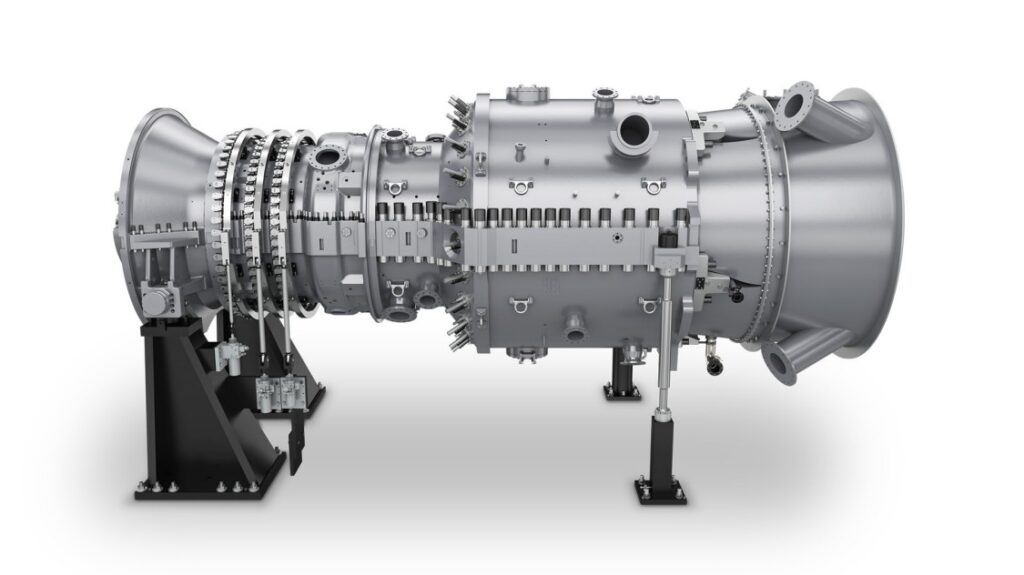
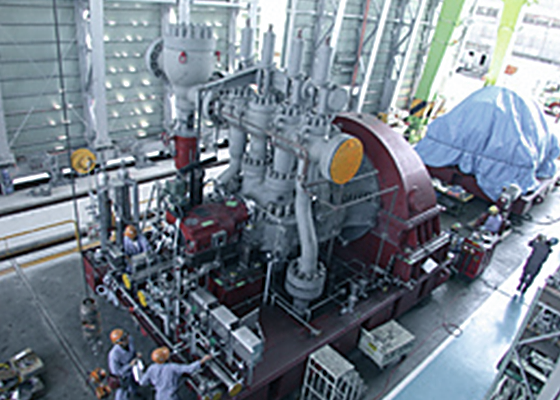
WHY, WHEN, WHERE, WHAT, WHICH, HOW TO IMPLEMENT A RCM IN TURBOMACHINERY
Why Implement RCM:
- Improve reliability and availability: RCM aims to identify and mitigate potential failure modes that can lead to unplanned downtime and production losses.
- Enhance safety: RCM helps identify and address safety risks associated with equipment failures, reducing the potential for accidents and injuries.
- Optimize maintenance costs: RCM focuses maintenance efforts on critical components, reducing unnecessary maintenance tasks and associated costs.
- Increase equipment lifespan: By proactively managing equipment health, RCM can extend the lifespan of turbomachinery, delaying the need for replacement.
When to Implement RCM:
- During the design phase: Implement RCM principles during the equipment design phase to ensure reliability considerations are integrated from the beginning.
- When reliability is low: RCM is particularly beneficial in existing plants with low reliability and high failure rates, where traditional maintenance practices are not effectively addressing the issues.
- During major repairs or overhauls: Take advantage of major repair or overhaul activities to introduce RCM principles and optimize maintenance strategies.
Where to Implement RCM:
- Existing plants: Implement RCM in existing oil and gas facilities to improve the reliability, safety, and performance of turbomachinery systems.
- New projects: Incorporate RCM principles into the design and commissioning of new turbomachinery systems to establish a strong reliability foundation from the start.
What to Implement in RCM:
- Failure mode and effects analysis (FMEA): Conduct detailed FMEA to identify and prioritize critical failure modes and their potential consequences.
- Maintenance strategies: Implement a combination of preventive, predictive, and condition-based maintenance techniques based on the criticality and risk associated with each failure mode.
- Condition monitoring: Employ various condition monitoring techniques like vibration analysis, oil analysis, and thermal imaging to detect early signs of degradation or abnormal behavior.
- Root cause analysis (RCA): Perform thorough RCA to identify and address underlying causes of failures, minimizing the likelihood of recurrence.
Which Components to Focus on:
- Critical components: Prioritize the analysis and maintenance efforts on components that have the highest impact on safety, production, and overall reliability.
- High-risk failure modes: Identify failure modes with the potential for severe consequences, such as equipment damage, environmental hazards, or safety risks.
How to Implement RCM:
- Establish a cross-functional team: Form a team comprising engineers, maintenance personnel, and operations staff to collaborate on the implementation of RCM.
- Collect data and perform analysis: Gather relevant data on equipment failures, maintenance activities, and performance metrics. Analyze this data to identify patterns and trends.
- Develop maintenance plans: Create maintenance plans and schedules based on the criticality and risk of failure modes, incorporating preventive and predictive maintenance tasks.
- Train personnel: Provide training and education on RCM principles and techniques to maintenance and operations personnel to ensure proper implementation and adherence to the RCM program.
- Continuous improvement: Regularly review and update the RCM program based on feedback, performance data, and lessons learned, continuously striving for improvement.
Implementing RCM in turbomachinery requires a systematic and well-planned approach, considering the specific needs and challenges of the oil and gas industry. It should be tailored to the unique characteristics of each turbomachinery system, incorporating industry best practices and lessons learned from past failures and maintenance experiences.
PROCEDURES, ACTIONS, STUDIES, ANALYSIS, MITIGATIONS, RECOMMENDATIONS TO IMPLEMENT A RCM IN TURBOMACHINERY
Procedure for Implementing RCM: a. Form an RCM team: Assemble a cross-functional team comprising engineers, maintenance personnel, and operations staff. b. Identify critical systems: Determine the turbomachinery systems that have a significant impact on production, safety, and reliability. c. Define system boundaries: Clearly define the boundaries of each system to ensure all critical components and associated failure modes are considered. d. Gather relevant data: Collect data on equipment failures, maintenance activities, performance metrics, and historical records. e. Conduct failure mode analysis: Perform a comprehensive failure mode analysis to identify potential failure modes and their consequences. f. Prioritize failure modes: Evaluate and rank failure modes based on their impact, criticality, and risk. g. Develop maintenance strategies: Determine appropriate maintenance strategies for each failure mode, such as preventive, predictive, or condition-based maintenance. h. Implement the maintenance plan: Develop detailed maintenance plans and schedules based on the selected strategies. i. Monitor and review: Continuously monitor equipment health, track maintenance activities, and review the effectiveness of the maintenance plan. j. Continuous improvement: Regularly review and update the RCM program based on performance data, feedback, and lessons learned.
Actions to Implement RCM: a. Perform equipment inspections: Conduct thorough inspections of turbomachinery components to identify signs of wear, damage, or degradation. b. Implement condition monitoring: Utilize techniques like vibration analysis, oil analysis, thermography, and performance monitoring to detect early signs of deterioration or abnormal behavior. c. Develop maintenance procedures: Establish detailed maintenance procedures for different maintenance tasks, including inspection, lubrication, alignment, and cleaning. d. Establish spare parts management: Maintain an inventory of critical spare parts and establish an effective spare parts management system to minimize downtime. e. Train personnel: Provide training and education on RCM principles, maintenance techniques, and safety protocols to maintenance and operations personnel.
Studies and Analysis: a. Failure mode and effects analysis (FMEA): Conduct detailed FMEA to identify and analyze potential failure modes, their causes, and associated consequences. b. Reliability analysis: Perform reliability analysis to evaluate the reliability characteristics of turbomachinery systems and identify areas for improvement. c. Root cause analysis (RCA): Conduct RCA to identify underlying causes of failures and develop corrective actions to prevent recurrence. d. Failure data analysis: Analyze historical failure data to identify trends, patterns, and common causes of failures.
Mitigations and Recommendations: a. Implement condition-based maintenance: Utilize condition monitoring techniques to determine the optimal timing for maintenance activities based on equipment health. b. Upgrade or replace critical components: Evaluate the performance and reliability of critical components and consider upgrades or replacements to improve reliability. c. Implement a robust lubrication program: Ensure proper lubrication of turbomachinery components to reduce wear and minimize the risk of failures. d. Enhance maintenance planning and scheduling: Optimize maintenance plans and schedules to minimize downtime, streamline maintenance activities, and improve efficiency. e. Implement reliability-focused design changes: Incorporate design modifications and improvements to address known failure modes and enhance reliability.
By following these procedures, taking appropriate actions, conducting necessary studies and analysis, and implementing mitigations and recommendations, the implementation of RCM in turbomachinery can lead to improved installation, operational, and maintenance efficiencies, enhanced performance, and reduced risks and failures in existing plants in the oil and gas industry.
